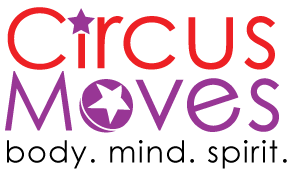
Why Circus?
Evidence suggests that circus arts education engages diverse populations and promotes social-emotional, physical, cognitive, and spiritual gains in health and wellness at or above the level of typical programs or activities.
Circus Program Participation Benefits:
-
Provides a fun, motivating and intrinsically reinforcing experience.
-
Increases positive risk taking both physically and emotionally, in a safe and supported environment.
-
Promotes physical health and body awareness through activity.
-
Enables participants to acquire a broadened skill base relating to circus as well as more generic 'life skills'.
-
Increases self-confidence and self-efficacy.
-
Improves social connectedness, teamwork, and leadership skills within the group.
-
Provides opportunities for calming rhythmic activities, increased sensory feedback, a focus on balance, and coordination.
-
Creates a space in which participants feel a sense of belonging.
Excerpt from Occupational therapy and circus: Potential partners in enhancing the health and well-being of today's youth by Jill Maglio and Carol McKinstry Australian Occupational Therapy Journal (2008) 55, 287-290

Equilibristics
Balance apparatus: rola bola, tightwire, unicycle, stilts, circus globe, etc.
-
Physical: Exercises the vestibular system and promotes postural control and spatial awareness.
-
Emotional: Reasonable risk-taking with success is a cornerstone of empowerment.
-
Cognitive: Accurate self-assessment, executive function.

Object Manipulation
To juggle, spin, throw, bounce, balance, etc., any object.
-
Physical: Hand-eye coordination, midline crossing, bimanual dexterity, grasp/reach, fine motor skills, spatial awareness
-
Emotional: Delayed gratification, perseverance, cooperation.
-
Cognitive: Concentration, planning & goal-setting, sequencing, problem solving
-
Passing multiple objects between partners and in groups requires and develops heightened awareness of oneself in relation to others.

Tumbling & Acrobatics
Rolls, inversions, partner-balance, human pyramids, etc.
-
Individual Work: tumbling involves stretching, bending, rolling, inversion, cartwheels, handstands, and other stunts, developing critical physical skills, core strength, and balance.
-
Partner/Team Work: partner acrobatics incorporates timing, cooperation, and communication skills.
-
Group Work: human pyramid building teaches students to be responsible for one another and to work as individuals in attaining group goals.
